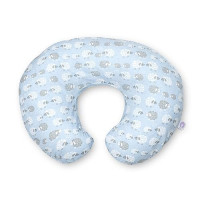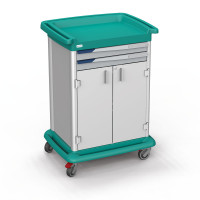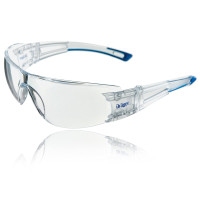Dental unit: a Key purchase for dental practices
Discover the secrets to choosing the perfect dental unit in our comprehensive buying guide. Whether you're looking for the latest technology or the best hygiene practices, our guide provides a complete overview of features, types, and essential tips to make the best choice for your dental practice's needs.
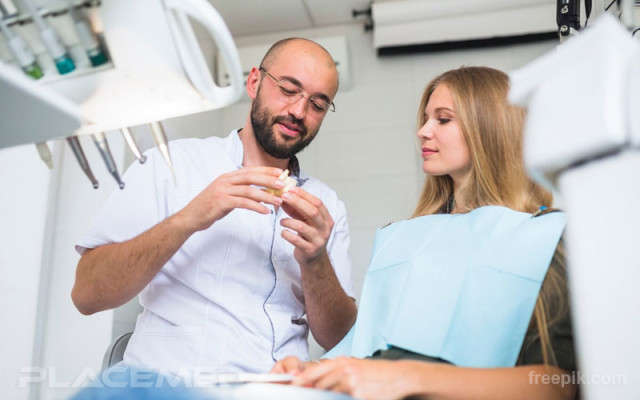
What is a dental unit?
A dental care unit is a piece of medical equipment used in dental offices and specialized medical clinics. It is a complete workstation that brings together different components necessary for dental treatments. The primary function of this dental equipment is to provide a convenient and ergonomic environment for dentists and patients during dental procedures.
The dental unit typically includes a comfortable dental chair where the patient sits during treatment. It is equipped with adjustable controls that allow the chair's position to be adjusted according to the practitioner's needs. Moreover, it is equipped with a powerful suction system to remove saliva and dental debris during procedures. A lighting lamp is also integrated to ensure optimal visibility during exams and procedures. Additionally, it offers optimal comfort for patients, thanks to features such as ergonomic chairs and customizable settings. This promotes a positive and relaxed experience, which is particularly important for anxious patients or those with specific needs.
This equipment centralizes all the elements necessary for dental treatments, thus offering increased efficiency and a simplified workflow. It allows dentists to have all tools and devices at hand, which increases productivity and reduces unnecessary movement during consultations.
What are the different types of dental units?
In today's medical equipment market, there are different types of dental units offering specific features and configurations to meet the needs of dental offices and clinics.
- Electric Dental Units: These operate through an electric system that powers the various components such as the chair, suction system, instruments, and lighting devices. They offer high precision and ease of use, allowing dentists to work efficiently.
- Hydraulic Dental Units: They use a hydraulic pump system to control the movements of the dental chair. They offer stability and smooth movement, as well as easy adjustment of the patient's position.
- Wall-Mounted Dental Units: These are fixed to the wall rather than being standalone. They are ideal for tight spaces or dental offices with space constraints. They nevertheless offer full functionality for dental procedures.
- Portable Dental Units: These are compact and lightweight, making them easily transportable. They are ideal for mobile dental offices or traveling clinics, offering the ability to provide dental care in remote or temporary locations.
- Digital Integration Dental Units: These are equipped with advanced digital technologies such as touch screens, intraoral radiography systems, and integrated dental practice management software. They facilitate digital workflow and offer extended connectivity for accurate diagnostics and treatments.
How to choose the right DENTAL UNIT?
To choose your dental unit wisely, it is essential to consider certain key criteria that meet your specific needs as a dental practitioner, including technical characteristics, available options and features, equipment ergonomics, and your allocated budget.
Technical Features
The technical features of this type of dental equipment play an essential role in its optimal operation and in the satisfaction of both the practitioner and the patient. The equipment includes various components such as the chair, suction system, lighting lamp, and many others. Here are the main technical features to consider when choosing a dental unit:
- Comfort and ergonomics of the chair: The dental chair should provide optimal comfort for the patient, with features such as position adjustments, quality padding, and lumbar support. For the practitioner, an ergonomic chair is essential for a comfortable working posture and to reduce fatigue.
- Efficient and quiet suction system: An efficient suction system effectively removes saliva, debris, and water during dental procedures. Look for dental units equipped with a powerful and quiet suction system for a pleasant working environment and better visibility.
- Suitable lighting options: Optimal visibility is crucial during dental interventions. Dental units should be equipped with high-quality lighting lamps, offering bright, uniform, and adjustable light to eliminate shadows and facilitate procedures.
- Advanced features: Dental units with advanced features add value to your dental practice. This could include digital connectivity features to facilitate access to patient records, water treatment systems for improved hygiene, and other technological innovations aimed at optimizing treatment performance and efficiency.
Options and Advanced Features
The options and advanced features of dental units offer possibilities for customization and performance enhancement to meet the specific needs of dental practitioners. Here are the main aspects to consider:
- Customization options: Modern dental units offer customization options to meet the specific needs of each practitioner. This may include ergonomic settings for a comfortable working posture, instrument setup options, and controls adapted to individual preferences. Customizing this type of dental equipment allows for a smoother and more efficient working experience.
- Integrated imaging systems: Some models come with integrated imaging systems, such as intraoral cameras. These systems enable the capture of high-resolution images of the oral cavity, thereby providing better visualization and tracking of treatments. The images can be shared with patients for better understanding and informed decision making.
- Compatible dental instruments and drilling systems: Dental units should be compatible with a range of dental instruments and drilling systems. This allows practitioners to use their preferred tools and adjust procedures based on the specific needs of patients. Compatibility with dental instruments provides flexibility in treatments and facilitates the integration of existing technologies.
- Integration with dental practice management software: Dental units can be integrated with dental practice management software, enabling the centralization of patient information, tracking of treatments, and efficient management of appointments. Integration with management software simplifies administrative tasks and improves the efficiency of the dental practice.
Ergonomics and Comfort
Ergonomics and Comfort
Ergonomics and comfort are essential elements, both for the patient and the practitioner. An ergonomic design, flexible settings, and integrated anesthesia systems contribute to a pleasant and stress-free experience during dental procedures. Here are some important points to consider for optimal ergonomics and comfort:
- Ergonomic design of the chair: A dental unit consists of a dental chair designed to offer optimal comfort. Ergonomic chairs come with high-quality padding, lumbar support, and customizable settings to accommodate the specific needs of the patient. An ergonomic chair design promotes patient relaxation and allows the practitioner to work in a comfortable position, thereby reducing fatigue and muscle strain.
- Flexible adjustments and positioning: A dental unit offers flexible settings to accommodate different dental procedures. This includes adjustments for the chair height, backrest tilt, armrests, and footrests. The ability to easily adjust and lock these settings allows the practitioner to find the optimal position for each treatment, thereby ensuring maximum accessibility and precision.
- Integrated anesthesia systems: A modern dental unit is often equipped with integrated anesthesia systems for easy and precise administration of local anesthetics. These systems enable the practitioner to easily control the speed and flow of anesthesia, thereby improving patient comfort and reducing the unpleasant sensations associated with anesthesia.
Costs and Budget
Evaluating the costs and budget is a crucial step when acquiring this type of dental equipment. Here are the important elements to consider:
- Assessment of costs associated with purchase and installation: It is essential to assess the total costs associated with the purchase and installation of a dental unit. This includes the purchase price of the dental unit, delivery fees, installation and commissioning costs, as well as potential fees for additional accessories and devices.
- Budget considerations based on features and specific needs: The features and additional options of a dental unit can vary considerably, which has an impact on the overall cost. It is important to evaluate your specific needs and determine the essential features for your dental practice. This will help you establish a realistic budget based on your priorities.
- Long-term costs related to maintenance, repair, and upgrade: In addition to the initial costs, it is also important to consider the long-term expenses related to the maintenance, repair, and upgrade of the dental unit. Some manufacturers offer service and maintenance contracts to ensure the proper functioning of the equipment. It is also wise to check the availability of spare parts and the cost associated with their replacement.
Hygiene and Sterilization
Hygiene and sterilization of a dental unit are absolute priorities to ensure safe and effective dental care. Here are the main points to consider to maintain high standards of hygiene and sterilization:
- Standards and regulations related to hygiene: The dental unit must comply with the standards and regulations established by health organizations and regulatory authorities. These standards define hygiene protocols and infection prevention measures to ensure top-quality dental care and reduce the risks of cross-infections.
- Precautions to ensure the sterility of the dental unit: Rigorous precautions must be taken to maintain its sterility. This involves the use of proper cleaning, disinfection, and sterilization techniques for surfaces, instruments, and devices used during dental procedures. Strict protocols should be followed to prevent any contamination and ensure optimal hygiene conditions.
- Integrated disinfection systems and cross-infection protection devices: The modern dental unit is equipped with integrated disinfection systems, such as automated cleaning devices and water treatment systems, which guarantee high standards of disinfection. Additionally, cross-infection protection devices, such as disposable protective barriers and effective suction systems, are essential to minimize the risk of pathogen transmission between patients.
- Regular maintenance and upkeep: Regular maintenance and upkeep are essential to ensure the hygiene and safety of the dental unit. This includes regular cleaning and disinfection of surfaces, replacement of filters and wear parts, and periodic checking of the proper functioning of disinfection devices. A rigorous preventive maintenance program helps maintain the optimal performance of the dental unit and prolong its useful lifespan.
 Francais
Francais 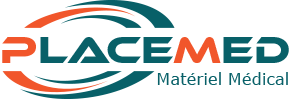
 Quote
Quote  Cart
Cart 


